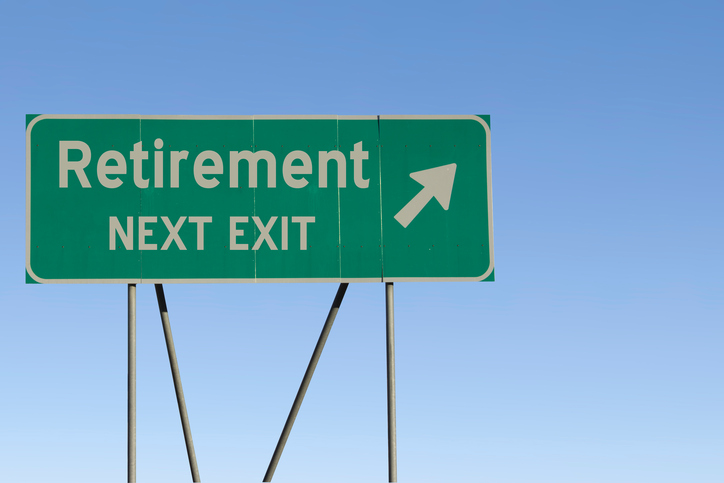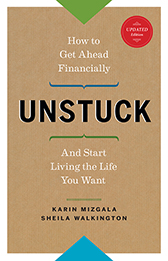By Sandra Mann, CPA, CGA, QAFP®

With 10 years to retirement, your daydreams may be turning to a morning latte on your deck, instead of a tepid coffee on your commute. But before you buy that Life Begins at Retirement bumper sticker and toss out your alarm clock, you have some work to do. It’s imperative that the financial decisions you make in this last decade before retirement are forward focussed and carefully planned.
Here are 5 things you must do now to ensure a smooth transition into the next chapter of your life.
1. Forecast Where You Will Be In 10 Years
You may (or may not) have worked with a financial planner in the past to determine what your needs will be in retirement. If you haven’t taken that step, you absolutely must, and sooner rather than later. If you have a plan in place, it’s important to see how well you are progressing towards your goals. If you discover that you are not on track, you still have 10 years to do something about it.
Some financial planners suggest a simple formula to determine how much of your current income you will need in retirement. It’s suggested, as a rule of thumb, that you save enough to provide roughly 70% of your pre-retirement income in your golden years. To reach this goal, you would need to accumulate roughly 12 times your current income by age 65. Of course, factoring in CPP, OAS, a company pension (if you’ll have one), and any other income streams, reduces the amount you will have to save in RSPs, TFSAs and other income investments.
However, at Money Coaches Canada, we don’t believe in such a cookie-cutter approach to retirement planning. To ensure you have an enjoyable retirement, one aligned with your unique goals and lifestyle requirements, we believe you should focus on carefully determining your cash flow needs in retirement and worry less about trying to save enough to replace an arbitrary amount of your pre-retirement income.
If, after this assessment, you feel that you are going to have to play some catch-up to get back on track, don’t panic. There are things you can do.
You can reduce your current expenses significantly and start saving more. Diligently done, 10 more years can make a big difference. The additional benefit of reducing your spending pre-retirement is that you won’t have to save as much, because good spending habits will serve you well in retirement too.
Doing these calculations and finding solutions can be challenging, and it would be wise to get an unbiased perspective. Even if you have an investment advisor, have an advice-only financial planner/Money Coach work through various scenarios to come up with your optimal plan.
2. Leverage Your Home Equity
Your home can be a significant source of income in retirement, especially for Canadians living in one of the country’s elevated housing markets.
There are several ways to monetize the equity in your home; whether these options are available to you will depend on your personal situation. You could:
Borrow against your home through a second mortgage or a home equity line of credit
- Pro: money-in-hand
- Con: monthly payments that may become a burden
Apply for a “reverse” mortgage
- Pro: money in-hand and no payments to make as long as you or your spouse are living in the home
- Con: Initial fees that can cost as much as $3,000. Plus, the high interest rates on these mortgages can eat up your equity over the years, reducing the value of your estate and legacy.
Downsize your home
- Pro: Money-in-hand and the option to buy or rent a smaller home or apartment. Plus, a smaller home is easier and less expensive to maintain. (If you think you are likely to downsize in retirement and you live in one of Canada’s elevated real estate markets, you may want to consider downsizing sooner and taking advantage of the soaring prices that are not likely to last forever).
- Con: There are substantial costs associated with a move. Also, some people are very emotionally attached to their home and neighbourhood and find this decision difficult.
If you would like more information on using your home’s equity, read Money Coach Christine Williston’s blog post: How Can My Home Equity Support My Retirement Goals.
3. If Necessary, Recalibrate
It’s possible that when you look at your numbers, you’ll have to confront the truth that you are further from your goals than you imagined. It may seem like the dream of retirement is only a dream. Don’t go into denial or get angry with yourself; be happy that you still have time to make changes.
It’s important to figure out what about your relationship to money allowed you to veer off plan. Take the time to complete our 7 Stages of Financial Well-Being® Quiz. Your answers will give you insight into what your next steps should be.
I also strongly advise that you get the help of a financial professional. Someone you feel comfortable with, who can provide encouragement, expert advice and accountability.
4. Don’t Give Up On Stocks
With 10 years to retirement you don’t want to invest your nest egg in a risky start-up or fledgling company. But, that said, you are probably in a position to retire in 10 years because of the growth you enjoyed through the stock market.
It’s important to remember that your retirement may start in 10 years, but it could last for 30 or more. There is still a lot to gain from investing for growth. Depending on your goals and risk tolerance, a balanced growth portfolio is generally considered to be 50% to 60% of your savings invested in high-quality stocks and the rest in fixed income. This equation can be tweaked to 40% in stocks if, at 10 years out from retirement, you are within 10% of your ultimate savings goal.
5. Consider Adjusting or Staggering Your Retirement Age(s)
While couples generally look forward to more time together in retirement, it may not be the best plan, emotionally or financially, to both retire the same year.
 Retirement takes adjustment. It’s almost always listed as one of life’s most stressful events. Having both spouses dealing with it simultaneously can create even more stress. But stress aside, depending on your ages and your particular employment situations, there may be financial benefits to one of you working one or even a few years longer than the other.
Retirement takes adjustment. It’s almost always listed as one of life’s most stressful events. Having both spouses dealing with it simultaneously can create even more stress. But stress aside, depending on your ages and your particular employment situations, there may be financial benefits to one of you working one or even a few years longer than the other.
It may be that working longer will allow for increased pension benefits. It’s also likely that there will be less dependence on retirement savings and more opportunity for continued investment if one spouse is still bringing in his or her full salary.
Remember Your Why
A clear vision of what you want from retirement will keep you focused when challenges arise. I’ve given you 5 things to do, starting right now, to help ensure that your plan to retire in 10 years becomes a reality. If you discover that you need to make some changes in your financial habits, you are not alone. So I want you to do one more thing. I want you to *GET EXCITED* about something you have planned for retirement, whether it’s a trip, an event, or more time for the people and activities you enjoy. Making changes will be easier when you remember your “WHY”.
A well-planned retirement is one of the best gifts you can give yourself. If you need additional support, please contact one of our Money Coaches today.
This post first appeared in 2017. It has been updated with current data and/or information and republished.


